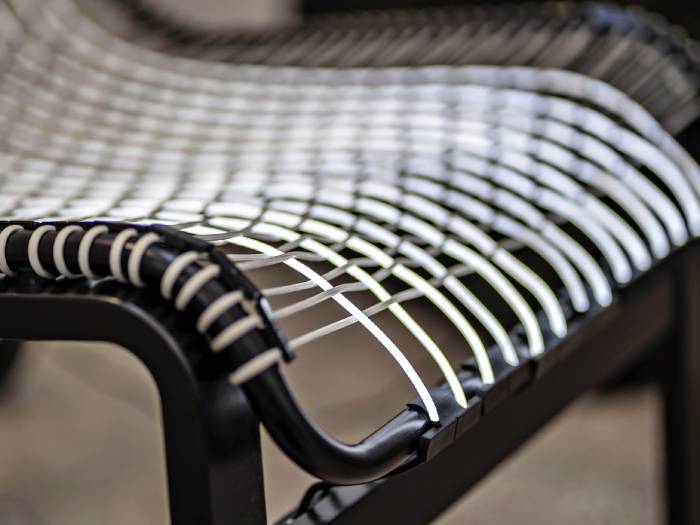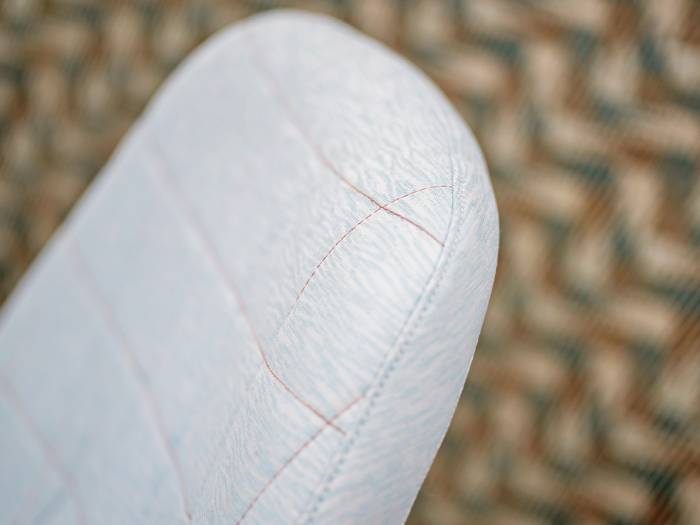Materials research, a key element in ŠKODA's sustainability strategy
Sustainable materials are becoming increasingly important in the automotive industry, and ŠKODA has long been active in the fields of innovation and research. Here is the approach the Brand is taking.
Creating sustainable vehicles requires full commitment and an innovative vision. For this reason, the designers in ŠKODA’s Colour & Trim team are experimenting with solutions such as recycled materials and natural fibres, but also cutting-edge surface treatments and next-generation paints.
“The road to sustainability isn’t always as clear-cut as it might seem; it’s surprising how some recycled materials can make a more significant contribution to global warming than solutions using virgin raw materials. That makes it necessary to carefully consider all the pros and cons in each specific case,” explains Kateřina Vránová, head of ŠKODA’s Colour & Trim department. In other words, using recycled materials does not automatically mean greater sustainability.
Respecting the environment

This is confirmed by Stefan Webelhorst, the Colour & Trim employee in charge of coordinating sustainability with other ŠKODA departments. “Right across all the company’s departments we are looking for ways in which we can make our products more responsible and environmentally friendly. But sometimes a seemingly straightforward path doesn’t actually lead to the desired goal.”
A practical example: synthetic fibres such as polyester are very easy to recycle. They can’t be recycled forever, but overall they are better than natural fibres, which can obviously also be recycled but have to be cut up or sliced, whereas polyester is melted. “Cutting changes the quality of the material and therefore its usability for specific purposes, whereas with polyester the material can be recycled many times over,” Webelhorst adds.
The life cycle
The use of environmentally friendly materials therefore needs to be considered in a broader context, taking into account not only the specific application, but also the subsequent recycling possibilities.
“Today, for example, we can use recycled and recyclable materials for seat covers, but further recycling is not that easy because of the construction and the materials underneath the cover. So we are working on a new seat design that will make recycling easier,” Webelhorst says, highlighting the importance of taking the entire life cycle of the material into account.
Choosing the materials

Natural materials must be chosen with care. “Cotton is unusable for us: not only is it flammable, but it takes a huge amount of water to grow it. The likes of hemp or flax are much better materials for us,” explains Webelhorst. Even traditional materials like leather can meet the sustainability principles - and it is also recyclable, so much so in fact that ŠKODA is already working on a solution for using recycled leather.
In parallel, tanning of the leather increasingly uses natural and environmentally friendly methods, for example the upholstery option on the ŠKODA ENYAQ iV which uses leather tanned with olive leaf extracts. “Leather used in the automotive industry is essentially waste from the meat industry. From this point of view, using it makes for a more efficient cycle,” adds Markéta Kalíková, who is in charge of working with leather materials within the Colour & Trim team. “However, we do understand that leather is an unacceptable solution for some people in terms of personal beliefs” and so ŠKODA has a range of alternatives for these customers too.
Coatings, foils and chrome plating
Paints and surface films are also relevant in terms of sustainability, and ŠKODA is also placing great importance on these kinds of innovations. The team of designers is working on solutions which will make increased use of a special coating to replace chrome-plated parts, whose production is relatively energy-intensive.
“From 2024, the EU is banning the use of hexavalent chromium, although trivalent chromium with slightly different properties can be used,” explains Peregrina Iglesias, one of the team’s specialists.
Interior coverings

Some components have a very specific texture or graphic design, obtained through the application of multiple layers of paint; random patterns of coloured droplets, or a coating with a surface texture resembling rough paper, can be created: each coating can have a completely new tactile quality.
And how do these coatings contribute to ecology? Apart from the use of ever cleaner and lower-impact paints, the advantage is that these coatings can be applied to a wide variety of materials. That chromed or aluminium effect can be given to plastic parts that are cheaper and more efficient in terms of carbon footprint, or even parts made from recycled materials that could not otherwise be used for interior decoration. “We can take various decor parts to a new level with IMD foils,” says Lada Dlabolová, who is specialised in plastic parts with a surface structure. These foils are applied, for example, to plastic mouldings, creating unexpected graphic effects.
Specific designs

“The same part can be used in the basic versions and in the better trim levels, without the film or with it, to evoke a greater sense of value,” Dlabolová explains. Compared to paint, foil has the advantage that it can be used to add a regular structure and offers further examples, for instance foil reliably covers visual imperfections in materials, such as those made from recycled natural fibres.
“Until now we couldn’t use that kind of material for decor surfaces, but now foils allow us to do so,” highlights Véronique Favia, a specialist in this field. “Many of these techniques and solutions are now ready for mass production, and some of them have already been implemented,” concludes Kateřina Vránová. Maximum sustainability in ŠKODA vehicles is within reach and not a distant goal, although it will be achieved gradually.
Source: ŠKODA
VGI | Responsible O.U.: VP | Creation date: article date | Class 9.1
